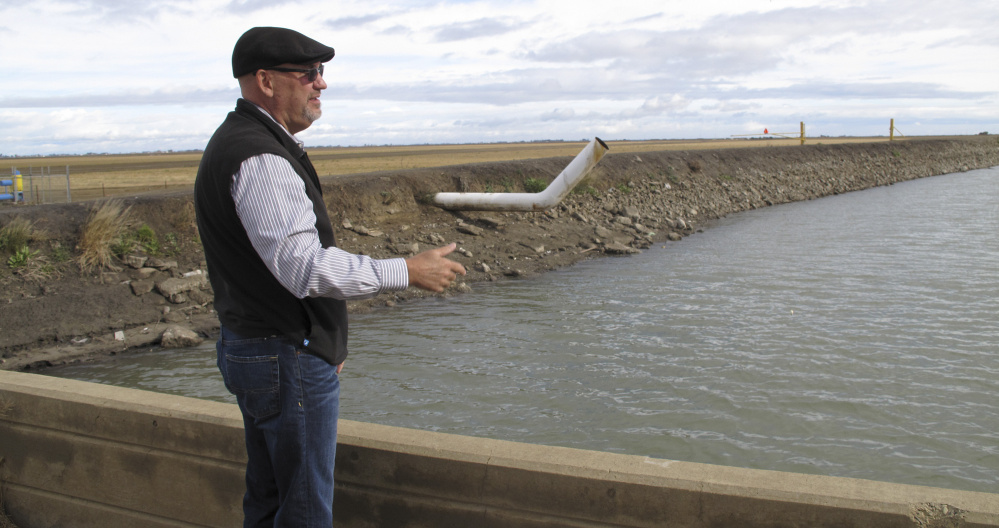DOS PALOS, Calif. — A canal that delivers vital water supplies from Northern California to Southern California is sinking in places. So are stretches of a riverbed undergoing historic restoration. On farms, well casings pop up like mushrooms as the ground around them drops.
Four years of drought and heavy reliance on pumping of groundwater have made the land sink faster than ever up and down the Central Valley, requiring repairs to infrastructure that experts say are costing billions of dollars.
This slow-motion land subsidence – more than one foot a year in some places – is not expected to stop anytime soon, experts say, nor will the expensive repairs.
“It’s shocking how a huge area is affected, but how little you can tell with your eye,” said James Borchers, a hydro-geologist, who studies subsidence and says careful monitoring is necessary to detect and address sinking before it can do major damage to costly infrastructure such as bridges and pipelines.
Land subsidence is largely the result of pumping water from the ground. As aquifers are depleted, the ground sags.
The most severe examples today are in San Joaquin Valley, where the U.S. Geological Survey in 1975 said half of the land is prone to sinking. USGS researchers later called it one of the “single largest alterations of the land surface attributed to humankind.”
A sparse mountain snowpack in California’s driest four-year span on record has forced farmers in the Central Valley, the nation’s most productive agricultural region, to rely on groundwater to irrigate their crops.
Drought has spawned a well-drilling boom with some tapping ancient aquifers 3,000 feet down.
In wet years, groundwater provides about 40 percent of water used in California, but in times of drought, groundwater can amount to 65 percent of the state’s water supply.
Decades of over-pumping have destroyed thousands of well casings and buckled canal linings. To keep water flowing through low spots, irrigation districts raise the sides of sagging canals so they can increase the water level and maintain a gravitational flow.
As a result, at least one bridge now sits below the waterline. Chris White, general manager of the Central California Irrigation District in Los Banos, said replacing it is expected to cost $2.5 million. Rebuilding another canal recently cost $4.5 million.
Putting a grand total on damage from subsidence in California is tricky because irrigation districts don’t often single out repairs required by subsidence from general upkeep, said Borchers, who estimates long-term costs as being “probably in the billions.”
Subsidence has been a problem for decades, and it’s accelerating. Last year near Corcoran, the land sank 13 inches in eight months, researchers at NASA’s Jet Propulsion Laboratory found by comparing images collected over time from satellites and airplanes.
Parts of the California Aqueduct, a massive canal that delivers water 400 miles to Southern California, also sank by nearly 13 inches, the NASA research shows.
This has cost the state of California “tens of millions of dollars” in repairs to the aqueduct in the last 40 years, and officials expect to spend that much in the future, said Ted Thomas, a spokesman for the state’s Department of Water Resources.
California became the last state in the West to regulate groundwater when Gov. Jerry Brown last year signed legislation ending a Gold Rush-era policy that generally let property owners take as much as they wanted.
Send questions/comments to the editors.



Comments are no longer available on this story